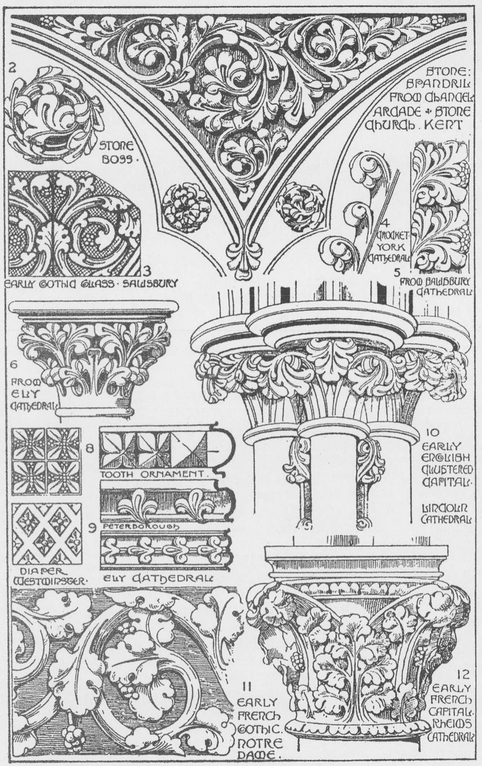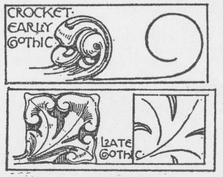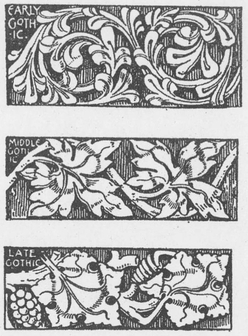Plate 21

EARLY GOTHIC ORNAMENT
The NORMAN style was succeeded by the pointed, or GOTHIC style, remarkable for its variety, its beauty of proportion, and the singular grace and vigour of its ornament. Showing no traditions, beyond Sicilian and Arabian influence, it grew rapidly, and reached a high degree of perfection in France and England. The massive and barbaric character of the Norman style gave place to the light clustered shafts and well-proportioned mouldings of the early English Gothic with its capitals characterized by a circular abacus, and the typical three-lobed foliage growing upwards from the necking of the shafts, thence spreading out in beautiful curves and spirals under the abacus. This tendency to the spiral line is peculiar to the early Gothic, and differentiates it from the Decorated and Perpendicular Period. The diagrams of the three crockets here given show the distinctive character of English Gothic ornament.


Early Gothic, three-lobed leaves arranged in spiral lines. Decorated Gothic, with natural types of foliage, such as the oak and maple, with a flowing undulating line. Perpendicular Gothic, showing the vine and leaves as elements, and arranged in a square and angular manner. The same features and characteristics are observed in the borders here given. The carved spandril from the Chancel Arcade, Stone Church, Kent (fig. 1), is one of the most beautiful examples of English ornament, remarkable for the vigour and flexibility of curve, its recurring forms of ornamentation, and admirable spacing, typical of much of our early English foliage from about 1170-1280.

The type of foliage in early English stained glass is somewhat similar to contemporary carved work, but showing more of the profile of the leaf ; it has a geometric or radiating arrangement in addition to the spiral forms of foliage (plate 59), and the admirable spacing of the ornament shows the skill in design that the mediaeval craftsman possessed.